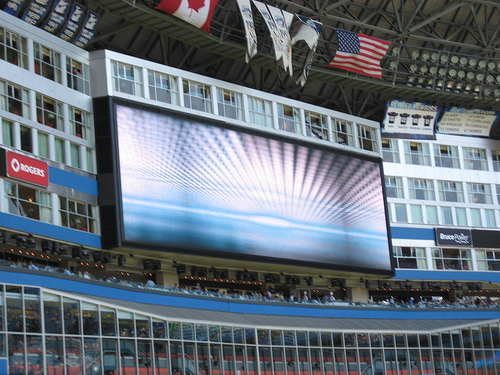Book Review: Bullpen Gospels by Dirk Hayhurst
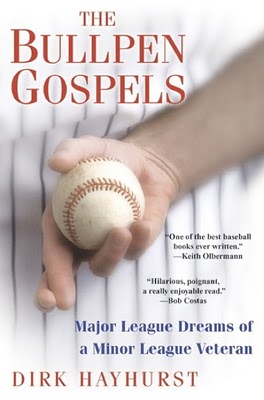 Halfway through Dirk Hayhurst’s Bullpen Gospels it occurred to me that I was reading one of the best books on baseball, ever.
Halfway through Dirk Hayhurst’s Bullpen Gospels it occurred to me that I was reading one of the best books on baseball, ever.
That’s some strong talk, particularly for someone who hasn’t read the entire baseball canon. But I’m getting there - just about every other book I read is about baseball.
I’ve devoured Jim Bouton’s Ball Four more than five times, I loved John Feinstein’s Living on the Black and Michael Lewis’ Moneyball. Also, as fans of this blog know, I’ve reviewed the graphic novel Satchel Paige:Striking Out Jim Crow as well as Sports Illustrated’s Great Baseball Writing.
The Bullpen Gospels slot in right above all of those, including Ball Four, my previous titleholder.
They’re comparable books too. Both are written by professional baseball players who find themselves pitching long relief in a bullpen full of odd characters. Yes, Bouton was an established major leaguer trying to master the knuckleball while Hayhurst, at that point, was a career minor leaguer in the San Diego Padres organization, but they’re still pretty similar books.
Bouton’s book is infamous for exposing the real lives of baseball heroes like Carl Yastrzemski and Mickey Mantle at a time when they were idolized by most fans. The aging Seattle Pilots reliever took a lot of heat for the book, with many people saying Bouton was a gloryhound. I don’t agree with that sentiment, but it certainly reads like an expose.
Love it or hate it, Ball Four is a hilarious and insightful read. But, by contrast, the Bullpen Gospels is a much more genuine and sensitive story.
Starting with Hayhurst’s truly dire home life with an unbalanced grandmother and a fractured family crippled not by one, but two, alcoholics you immediately feel for the young reliever. When he moves on to spring training and the minor leagues you can’t help but appreciate his sense of humour.
Perhaps the most noticeable difference between Hayhurst and Bouton is that the former rarely criticizes his teammates or the Padres’ executives. On the few occasions when he does speak poorly of someone, it is a reasonable and measured critique, and he shies away from dropping big names for the sake of glamour.
The only person Hayhurst is really hard on is himself.
Gospels is a quick read that makes its way through an entire baseball season, with a truly joyous ending. It also imparts a better understanding of what life in the minors is like for aspiring ballplayers. Hayhurst is an effortless and charming writer. He’s likeable and always sincere in his beliefs.
I’d recommend this book to anyone, particularly as a companion to Jim Bouton’s Ball Four.
An open letter to the Toronto Blue Jays
As I’ve mentioned previously, I’ve got a season’s pass for the 500 section of the Rogers Centre for all of the Toronto Blue Jays home games.
This is the fifth season that I’ve had the pass and it’s always a good purchase. The last two years have been particularly enjoyable since the Jays have been very good, particularly in the spring.
However, there’s a problem that creeps up every few games which bugs me. It happened at the last two games I attended and, frankly, I am fed up. So this morning I sent the following email to the Blue Jays:
Dear Blue Jays/Rogers Centre Staff,
I've been a Toronto Star Seasons Pass holder for the past five seasons. I enjoy going to the games and cheering on the Blue Jays.
However, I'm frustrated with my experience at the Rogers Centre and the lack of instant replay on close calls.
This was underscored by the games on Sunday, May 16 and Monday, May 17.
On Sunday John Buck hit a long ball that, from my vantage point in the 500s, looked like a grand slam. However, it was called a ground rule double.
To the umpires’ credit, they went into the dugout to review the play.
Unfortunately, due to the Rogers Centre policy of never showing a close call on the JumboTron, I couldn't see whether or not the officials were making the right call. I was robbed of the chance to judge for myself. I only learned that the umpires had made the correct call when I got home and saw the highlights on TV.
Similarly, at Monday's game, a close call was not shown on the JumboTron.
Lyle Overbay bobbled a throw from Jose Bautista, earning an error. He then threw the ball to third, which sailed past Bautista, earning another error.
Again, thanks to the Blue Jays' short-sighted policy of not showing close calls, I never saw that Overbay had mishandled Bautista's throw.
Instead, I had to rely on this morning's SportsCentre to learn that the umpires had, in fact, made the right call.
These are not the only examples of this frustrating policy, they're just the most recent.
It would do a lot to improve your organization's in-stadium product if you would stop protecting your players and the umpires from the occasional round of heckles.
Please start showing replays of all plays - even if they're close or controversial - because it greatly increases the enjoyment of the game for your audience.
Sincerely,
John
I’ve discussed it with some of my friends and co-workers and have learned that the policy is a passive directive from Major League Baseball’s head office.
The Toronto Star’s Richard Griffin summed it up last Wednesday:
“It is in fact a recommendation from Major League Baseball that teams not show a) close ball-strike replays; b) close plays that may incite the crowd against umpires; and c) plays that are under review i.e. home run calls. Now not every team abides by that rule, although all do on balls and strikes, but the Jays are good, responsible corporate citizens and do not show close calls on the replay board. I disagree because why should fans sitting at home know more about the game than those in the ballpark?”
Obviously, I agree with Griffin’s sentiments.
I would add an important note: In both cases this weekend the umpires had made the correct call. It was close, but they were spot on. Therefore, an instant replay wouldn’t incite the crowd against umpires.
Yes, as a Toronto fan I would have booed because I was frustrated with Overbay’s errors, but I would not have felt any anger toward the umpire for making the right call.
Further, Buck’s ground rule double wouldn’t have caused me to boo at all. He still batted in some runs and gave the Jays the lead. Not as good as a grand slam, but ultimately, there’s nothing to boo there.
If the officials are making objective and correct calls, then the commissioner’s office should have enough confidence to include their fans in what’s happening on the field.
No good can come from leaving your fan base ignorant of what’s going on in the course of a game and MLB as well as its franchises should adjust this rule.
In particular, the Rogers Centre has a beautiful JumboTron that should be put to good use. The Blue Jays should be able to trust their sedate Toronto supporters to not freak out over a controversial call.
The Toronto Blue Jays have dropped the ball
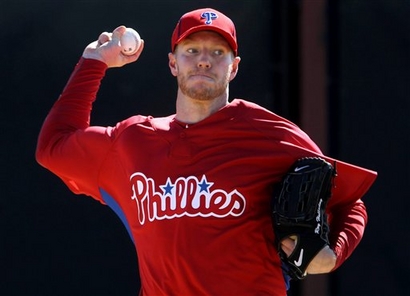 This week is one of those stretches where everything seems to be going on at once in the world of sports.
This week is one of those stretches where everything seems to be going on at once in the world of sports.
Playoffs in the National Basketball Association and the National Hockey League, the world hockey championship and the announcement of World Cup rosters have all garnered headlines in sports sections across the country.
But one piece of news was sure to rankle Canadian sports fans more than the rest – Roy Halladay’s return to the Rogers Centre in late June has been relocated to Philadelphia.
The series was supposed to be a homecoming for the former Jay who is now anchoring the Phillies' rotation.
However, because of a security perimeter set up around the Metro Toronto Convention Centre for the G-20 Summit, Halladay won’t be returning to his old stomping grounds until at least 2011. That is when the Jays and Phillies will next face each other in inter-league play.
Although this year’s series will now be held in Citizens Bank Park, the Blue Jays will still be the home team of record, with the American League’s designated hitter rule in effect and Toronto still getting to hit at the bottom of the inning.
“We would have been bringing people down into an area where people aren’t being asked to come to,” said Blue Jays president and chief operating officer Paul Beeston.
Although safety concerns should be a primary concern of the Toronto franchise’s front office, they could have handled this situation better.
After all, American League rules won’t protect the Blue Jays from Philadelphia’s notoriously obnoxious hecklers. Having the last at bats of the game won’t mitigate the fatigue of travel. It really isn’t an ideal alternative.
The Phillies will also be seeing some kind of profit margin from this change of scenery. Although Beeston insists the endeavour will probably be revenue neutral, I find it hard to believe that the Jays wouldn’t have benefited from a temporary boost in attendance figures.
It would also have been cathartic for a beleaguered Toronto fan base that is still reeling from the loss of Halladay, arguably the greatest player in franchise history.
A better idea would’ve been to put the series at PNC Park, home of the Pittsburgh Pirates. It would still be some distance for Toronto fans to travel, but it would also have been a long drive for the Phillies and their supporters.
Pirates fans would be just as likely to root against their Pennsylvanian rivals as they would be to boo the Blue Jays, so it would eliminate Philadelphia’s home-field fan advantage.
Another logical choice would have been Coca Cola Field, home of the Triple-A Buffalo Bisons. Even closer to Toronto than Pittsburgh, the park has a capacity of 18,025. That’s not up to Major League Baseball’s usual standards, but it would definitely be big enough to hold Toronto’s average crowd of 15,207.
Again, the New York state crowd would be just as apt to heckle the Phillies as they would the Blue Jays.
The move to Philadelphia’s Citizens Bank Park is yet another failure by the Toronto Blue Jays front office to show any kind of respect for its fan base. They could have done better. Done more than just shrug and brush off any concerns at a press conference.
Moving from the Rogers Centre for the duration of the G-20 summit was necessary, but it seems like they put little thought into viable alternatives. Beeston and company have mishandled the situation and done their supporters a disservice.
You’re bringing me down, ARod
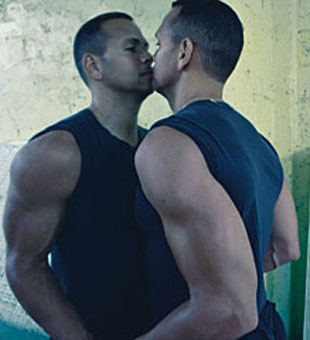
This photo of Alex Rodriguez has nothing to do with Thursday's game against the Oakland Athletics. It's just funny.
Yesterday I tried to be sunny and say three nice things about Major League Baseball. It took less than 24 hours for Alex Rodriguez to bring me back down with his bush league play.
In case you missed it, Yahoo Sports’ Big League Stew summed it up well:
“In the sixth inning of the A's 4-2 victory, Rodriguez went from first to third on a foul ball by Robinson Cano. His trip back to first took him right over the pitcher's mound, an unspoken no-no that ticked [starting pitcher Dallas] Braden off right away.
After a double play ended the inning, the 26-year-old pitcher immediately started yelling at A-Rod — watch it here — who claimed he didn't know he had done anything wrong.”
This isn’t the first time that ARod has broken one of baseball’s unwritten codes. We’ll ignore his admitted steroid use and focus on his transgressions against the game’s etiquette.
My first exposure to Rodriguez’s classless brand of play was during the infamous 2004 American League Championship Series with his New York Yankees leading the series against the Boston Red Sox 3-0. On a routine groundout to the pitcher ARod decided to chop the ball out of Bronson Arroyo’s hand. After some deliberation the umpires ruled him out.
It became a turning point in the series with the Red Sox rallying to an improbable seven-game series victory.
Three seasons later, Rodriguez got into the same kind of shenanigans at Toronto’s Rogers Centre. During an infield fly Rodriguez, circling rounding third, yelled right behind the rookie infielder who had called for the ball. Believing that he was being called off by another Blue Jay, the fielder let the ball fall harmlessly to the ground, allowing the Yankees to score.
Asked about the incident, ARod claimed that he had only yelled in celebration.
My problem with ARod isn’t so much what he does, but how he handles the ensuing criticism. He refuses to accept responsibility.
I don’t mind there being a heel in baseball. In fact, I think it’s one of the best things about Barry Bonds’ entire career. I didn’t like the former Giants slugger, but I could at least admire his willingness to be the villain.
Instead, of Bonds’ unique sense of personal responsibility, we get Rodriguez saying this in reaction to Braden’s blow-up: “He just told me to get off his mound. I was a little surprised. I'd never quite heard that. Especially from a guy that has a handful of wins in his career ... I thought it was pretty funny actually.”
I see ARod’s flaunting of baseball’s social conventions as something akin to taking a run at a goaltender in hockey or flagrantly fouling a star player in basketball. You can do it, but don’t act surprised when they’re upset.
Don’t dismiss their complaints because you have a higher batting average or get more lucrative endorsement deals. Appreciate that if you lack respect for your opponents they’re going to disrespect you. Expect some sort of retribution and take your lumps.
Let’s try a little positivity…

One of the things I love about baseball is the relaxing atmosphere of afternoon games, particularly when broadcast from Turner Field on Peachtree TV.
I’m reading Sports Illustrated’s Great Baseball Writing and I’ve learned something from the various essays and articles in the volume – the great American pastime is always in a state of hand-wringing about the State of the Game.
Think about it. At the turn of the 20th century there was great concern over the hoodlums who played the game. The 20s were marred by gambling scandals, primarily the one revolving around the Chicago White Sox and the 1919 World Series. After that was World War II, segregation, integration, labour strife and, most recently, steroids.
There’s always a new problem plaguing the sport.
In all that doom and gloom there isn’t enough talk about what makes baseball great. I’m as guilty of this pessimism as the next person. This season alone I’ve taken shots at my hometown Toronto Blue Jays, complained about lengthy games and weighed-in on Joe Cowley and talk of moving the Jays.
So let’s get positive. Let’s talk about three things that I love about baseball.
1) Afternoon Games
Nobody likes to work during the summer. It’s a drag. Everyone would much rather be outside, enjoying the sun. Unfortunately, employment is a necessary element of being a part of today’s society.
However, baseball matinees can provide some respite from the drudgery of work. Following the game on the radio, on TV or on the Internet is always a pleasant distraction from a job.
A particular favourite of mine is to follow the Atlanta Braves on Peachtree. Their announcers are laid back and the fans at Turner Field are great. It’s always relaxing and fun to watch.
2) Tradition
I really enjoy the little social behaviours that surround baseball games. Waiting for the half inning to return to your seat after a trip to the concession stand. Judging a person’s character based on whether or not they use the real pitcher’s rubber during the opening pitch. Singing, stretching and dancing during the seventh inning stretch. They’re all good.
A particular favourite is the habit of Torontonians to boo any opposing team that dares to have a mound meeting or try to pick-off a runner. No matter what the situation, Jays fans go nuts at the very thought of another team trying to invoke strategy.
3) The Fans
Baseball fans can’t compete with other sports’ supporters in terms of passion or intensity, but they are definitely smarter. Hockey fans, as much as I love ‘em, are basically only capable of three sounds – boo, cheer and Go <team name> Go! The rest of the game is spent in a fixed state of concentration. Football and basketball fans are much the same.
However, baseball fans sing songs together, come up with chants, and best of all heckle. No matter where they’re sitting in a stadium they will yell at the top of their lungs lengthy diatribes on their target’s short-comings as a player.
Their knowledge of bench players and opposing teams runs deep too, with many fans citing the personal lives of the athlete. Remember when it was rumoured that Alex Rodrgiuez was stepping out on his wife with Madonna? Good times. Truly, a golden age of heckling.
Tempest in a tea pot: thoughts on the Joe Cowley controversy
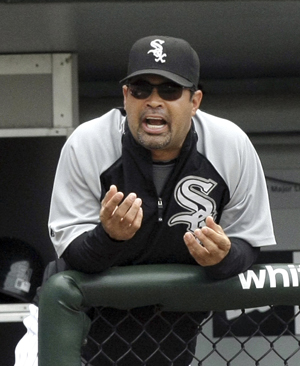
Chicago White Sox manager Ozzie Guillen was the voice of reason in the Joe Cowley controversy? Weird.
Last Thursday the Toronto sports blogosphere was aflame with controversy over a web article written by Chicaco Sun-Times beat reporter Joe Cowley titled “No, Canada, for MLB”. In short, it was about how the Blue Jays are a moribund franchise that should be moved.
As a Torontonian - born and bred -I had a very strong, knee-jerk reaction to reading this. After all, who is this guy? I don’t know him from Adam. Doesn’t he know that we’re the centre of the universe?
Reading Cowley’s Wikipedia profile did little to mitigate my rage. I mean, who wouldn’t be inflamed when he “protests” Canada by refusing to stand during the national anthem? The two incidents make him appear ignorant and ethno-centric.
However, after a day or two of reflection I calmed down. After all, Cowley clearly didn’t know what he was talking about. He was probably just trying to get a reaction from loyal Blue Jays fans.
This morning, Cowley appeared on the Fan 590’s Big Early with Don Landry and Gord Stelleck where he defended himself admirably, pointing out that his infamous remark that Toronto was “nothing but a city in a third-world country” was taken out of context.
However, Cowley stuck to his guns and reiterated his belief that the Blue Jays should be moved. He re-stated his beliefs that Venezuela deserves a team and that, aside from political reasons, it would work in Caracas, the capital of the country.
Cowley had addressed this idea in his article, with supporting quotes from White Sox manager Ozzie Guillen and pitcher Freddy Garcia. Both Venezuelans spoke about how popular a team would be in Caracas.
That’s entirely fair comment. It would be popular. Economically viable? No. Politically possible? No. Safe? Not even a little. But boy, there would be crowds.
Ask any Winnipeg Jets supporter – drawing a crowd isn’t enough. You need the backing of a strong business community. Caracas lacks that kind of legitimate financial support.
Also, let’s consider who he asked – two proud nationalists who, as fans, would undoubtedly love to see a major league team in their country. I can entirely sympathize. As a Canadian I love having a Major League Baseball franchise in my country, and am sorry that Montreal lost the Expos.
Hell, if my heart had its way every major Canadian city would be represented in the National Hockey League and MLB. It just isn’t a realistic desire.
It’s worth noting that neither Guillen or Garcia said that the Jays should be moved there or that the Toronto franchise should be moved at all. They just said that they’d like a team in Venezuela.
Guillen did speak about how the dwindling fan support, compared to the Jays dynasty of the early 1990s, is a sad state of affairs. Again, I agree. It is sad. But the White Sox manager never explicitly said that the team should be folded or relocated. He was just commenting on the rather pathetic attendance figures.
As for Rios’ and his claim that “There's that small group of diehards, but it’s hockey, hockey, hockey. It’s gotten sad here. They just don’t really care.” It’s hard to believe that he doesn’t have some resentment toward Toronto after he was put on waivers by the Blue Jays last season.
Jays fans certainly don’t like him: he had been booed during each of his at-bats over the course of the four-game series.
At the end of the day, I think Cowley’s article reads like a combination of someone with an agenda to push and someone looking for some cheap heat, trying to get a rise out of a beleaguered fan base to generate some hits for his web presence.
In all honesty, I’m sorry to have wasted 639 words on this “news”. Cowley’s already gotten enough attention for his ill-considered article.
Toronto has two strikes against it for most professional athletes
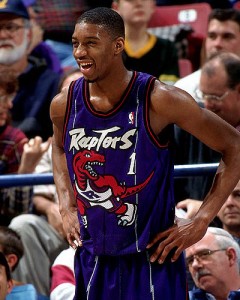
Former Toronto Raptor Tracy McGrady recently enlightened Torontonians as to why he left the Raptors.
This summer could be particularly heart-breaking for fans of the Toronto Raptors as they face the prospect of forward Chris Bosh, arguably the best player the team has ever seen, leaving the city as a free agent.
Toronto Blue Jays fans can sympathize with their basketball neighbours – this summer they lost ace Roy Halladay in a lopsided trade with the Philadelphia Phillies and Seattle Mariners.
It’s a familiar story for Torontonians. One of their teams will draft a player who becomes a star, but the franchise player eventually begins to grumble and complain about greener pastures, eventually demanding a trade or letting their contract expire and moving on via free agency.
Fortunately, NBA All-Star Tracy McGrady, a former Raptor, was in town and shed some light on the topic during a shoot-around with his teammates on the New York Knicks.
“Some guys do it for different reasons,” McGrady said. “[Bosh has] been here for quite some time now, and he's personally been successful. The team really hasn't done that much.”
And that’s the problem – teams in Toronto struggle against American competition. There are two main reasons for this:
1. The taxes in Canada limit team’s options when it comes to free agency.
Any professional athlete in a major sport (basketball, baseball, hockey) is going to earn in the high six figures.
In the United States, that would put them in the highest tax bracket, where they’d have to pay about 4.3% of their annual income to the federal government.
Employees in Canada who earn more than $126,264 pay 29% of their annual income to the federal government.
That is a jarring disparity. An athlete who earns $10 million per year on the Blue Jays or the Raptors would have to pay $2.9 million to the taxman. In the United States that same athlete would have to pay $430,000.
It’s tough to compete with other teams for prized free agents when they player will be losing 29% on the dollar just for signing on the dotted line.
2. Teams in Toronto offer less media exposure, making it a less attractive option for players.
Toronto is the biggest media centre in Canada, and actually stacks up pretty well against other North American cities in terms of population (fifth largest city, eighth largest metropolitan area).
However, sports teams based in Toronto get the short end of the stick when it comes to being televised on American networks.
Without a high profile in the United States an athlete can’t capitalize on their secondary source of income – endorsements and sponsorships. For example, Chris Bosh was drafted in 2003, the same year as LeBron James, Dwyane Wade and Carmelo Anthony. However, Bosh doesn’t even rank in the top 15 for jersey sales, and neither does Toronto for team sales. By comparison, all of Bosh’s draftmates rate highly on the list, even though they play for teams in smaller markets.
It all boils down to money. Professional athletes lose significant amounts of income from both of their main revenue sources, which makes Toronto a tough sell.
Some of you may be wondering why I haven’t mentioned hockey, a sport that has six teams in Canada? Simple, really.
Most hockey players are Canadian, and so they’re used to heavy taxation. The second largest group of players in the National Hockey League are European, who are also used to high taxes.
Beyond Sidney Crosby and Alexander Ovechkin, most players don’t expect, hockey players aren’t expecting much revenue from endorsements and sponsorship.
Also, the fact that there are six Canadian teams mitigates the lack of coverage in the United States - ESPN can ignore the Raptors and Blue Jays because they’re the only Canadian teams in the league, but when there’s at least one Canadian team playing every night and every franchise prominently features athletes from Canada, they’ve got no choice but to acknowledge non-American teams.
As an aside, all this adds to the fact that the Buffalo Bills, or any other team NFL team, would not work in Toronto.
All this is to say that in leagues where there is only one Canadian team (NBA, MLB and the MLS) there is a nearly unique set of challenges that face franchises based in Toronto. When the Raptors, Blue Jays and TFC struggle in the standings and begin to lose marquee players, it’s probably because they’re not grappling with the reality of the market.
Sure, a team can draft a young prospect, but it’s tremendously difficult to put together a team that can contend for the championship when so many players see Toronto as an undesirable city to play in.
